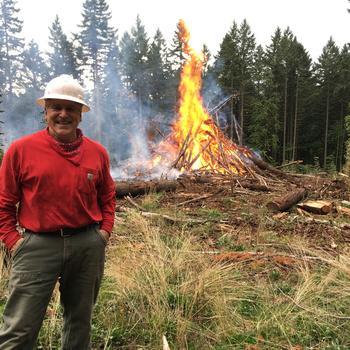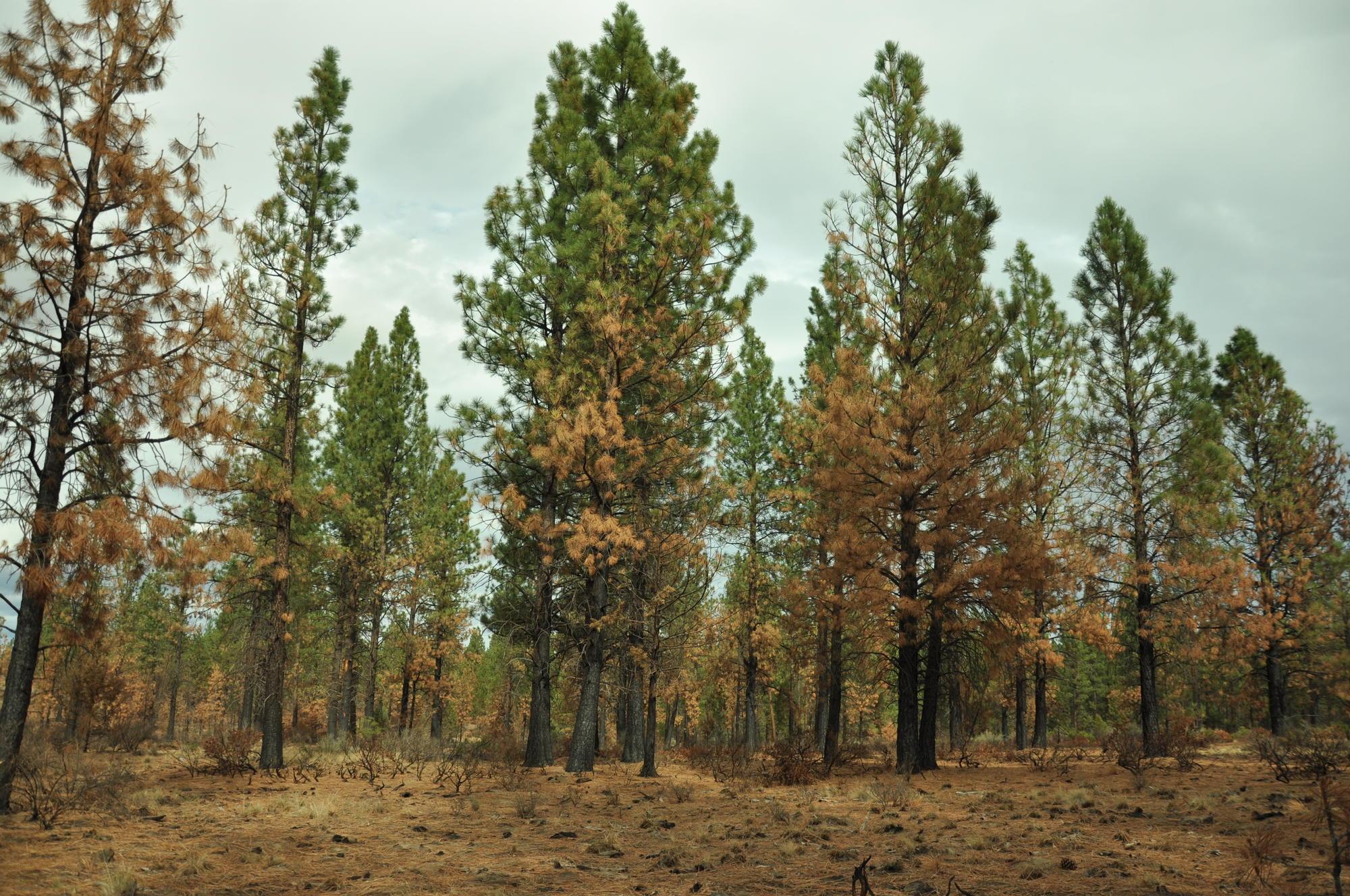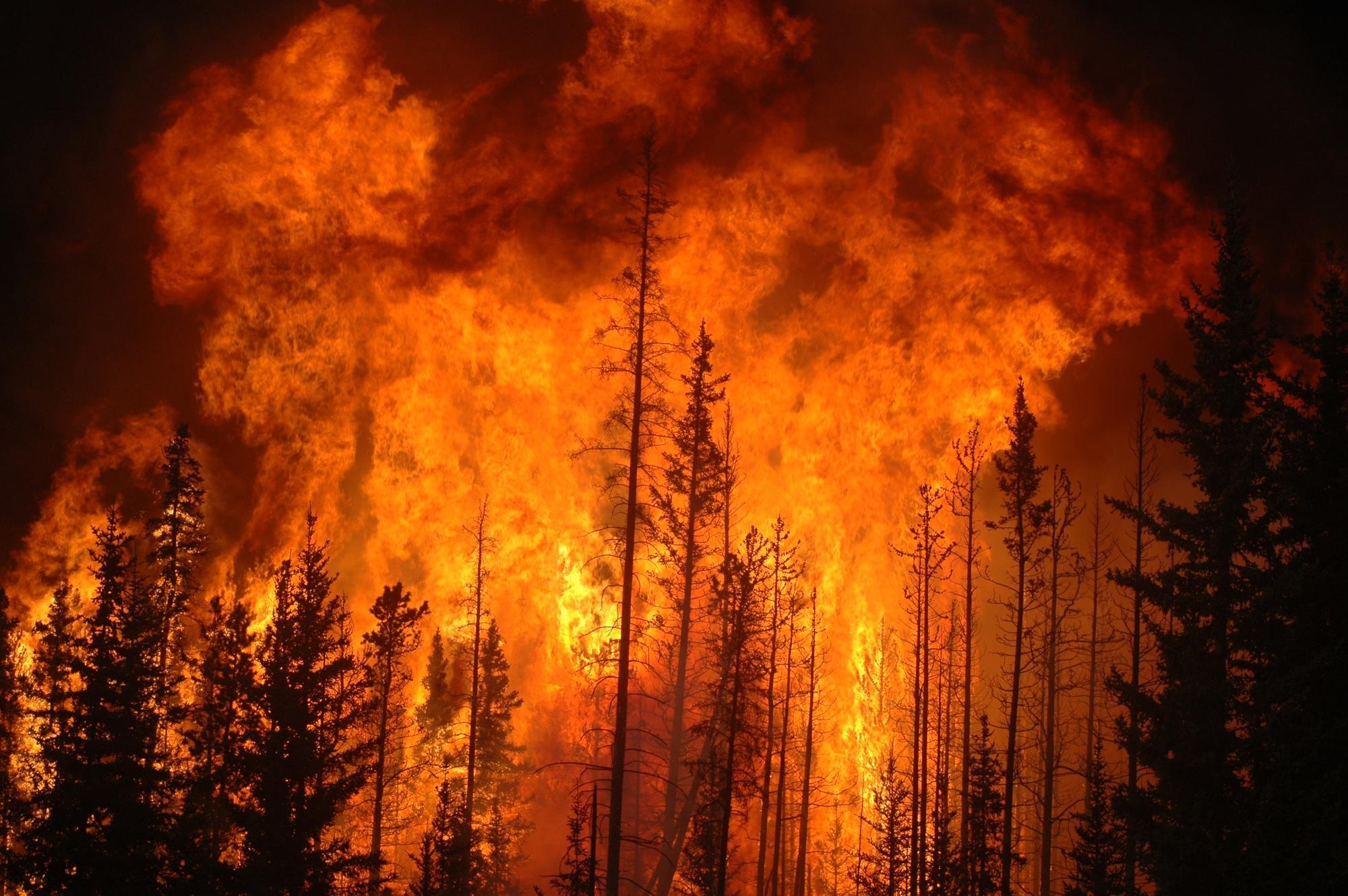Research findings over the last 10 years reveal the following:
- The total area burned annually by wildfire in the United States has increased since the 1980s. Nine of the 10 years with the most acreage burned have occurred since 2000, including the peak year of 2015. While there is a trend of increasing acreage burned, there is no clear trend in wildfire frequency.
- Since the 1980s, the number and size of large (>1,000 acres) wildfires and the total area burned in the western United States has increased. These trends are found in most, but not all, western U.S. ecoregions and states, including Oregon. Across the West, fire seasons have started earlier and lasted longer during the year.
- Very large fires (also called “megafires”) represent a small number of the total fires but comprise the majority of the area burned. For example, from 1970 to 2002 on U.S. Forest Service lands, 1.1 percent of all fires burned 97.5 percent of total area. During this same period, firefighters successfully extinguished
97 to 99 percent of all wildfires on Forest Service lands while they were still small (<300 acres). - Trends in fire severity vary by region, vegetation type, and historic fire regime (the spatial pattern, intensity, and frequency of occurrence in which fires naturally occur over time in a particular region). For example, in moist forests of the Pacific Northwest and the northern Rockies, the percentage of high-severity fire does not appear to be increasing. In these forests, fire is primarily climate-driven and there is no uncharacteristic buildup of fuels due to fire exclusion. In contrast, in dry forests in parts of the Southwest and in the Sierra Nevada, there is evidence that an increasing percentage of forests are burning at high severity. Historically, frequent fire limited fuel buildup in these forests, but decades of fire exclusion (and in some areas, poor management) have resulted in large fuel accumulations. Widespread and intense drought stress also has increased tree mortality in some dry forests, leading to higher dead fuel loads and drier surface conditions.
- In the Pacific Northwest, the proportion of fire burning at any severity level does not appear to have changed from 1985 to 2010. During this period, wildfires in both moist and dry forests have typically included a mix of low-, moderate-, and high-severity fire. In moist forests that historically experienced high-severity fire, high-severity fire accounted for about 45 percent of the acres burned in the 1985–2010 period, with most of the high-severity fire occurring in patches of over 250 acres. In dry forests that historically experienced low- and moderate-severity fire, these severity levels accounted for roughly 75 percent of the acres burned during the 1985–2010 period. However, the proportion of high-severity fire, about 25 percent, and the size of high-severity patches were greater than would be expected in a low-severity fire regime, suggesting that dry forests have departed from historical patterns of burn severity.
Summary
Wildfires have increased in size in most western forests since the 1980s, and much of this increase is associated with a warmer, drier climate. In moist forests, there is no apparent trend in the proportion of high-severity fire. In some dry forests where fires have historically been fuel-limited, there is evidence that both the percentage and average patch size of high-severity fire is increasing. Climate projections suggest that these trends will likely accelerate in the near future.
Resources
Calkin, D.E., K.M. Gebert, M. Krista, J. Jones, J. Greg, and R.P. Neilson. 2005. Forest Service large fire area burned and suppression expenditure trends, 1970–2002. Journal of Forestry, 103(4): 179–183.
Dennison, P.E., S.C. Brewer, J.D. Arnold, and M.A. Moritz. 2014. Large wildfire trends in the western United States, 1984–2011. Geophys. Res. Lett., 41: 2928–2933.
Dillon, G.K., Z.A. Holden, P. Morgan, M.A. Crimmins, E.K. Heyerdahl, and C.H. Luce. 2011. Both topography and climate affected forest and woodland burn severity in two regions of the western US, 1984 to 2006. Ecosphere, 2(12): 1–33.
Miller, J.D., C.N. Skinner, H.D. Stafford, E.E. Knapp, and C.M. Ramirez. 2012. Trends and causes of severity, size, and number of fires in northwestern California, USA., Ecological Applications, 22(1): 184–203.
Miller, J.D. and H.D. Safford. 2012. Trends in Wildfire Severity: 1984 to 2010 in the Sierra Nevada, Modoc Plateau, and Southern Cascades, California, USA. Fire Ecology, 8(3): 41–57
National Interagency Fire Center. Total Wildland Fires and Acres (1960-2017). Retrieved March 6, 2018. https://www.nifc.gov/fireInfo/fireInfo_stats_totalFires.html
Northwest Fire Science Consortium. Fire Fact: What is? Fire Severity. http://www.nwfirescience.org/sites/default/files/publications/FIREFACTS…. Retrieved March 6, 2018.
Reilly, M. J., C.J. Dunn, G.W. Meigs, T.A. Spies, R.E. Kennedy, J.D. Bailey, and K. Briggs. 2017. Contemporary patterns of fire extent and severity in forests of the Pacific Northwest, USA (1985–2010). Ecosphere, 8(3): e01695. 10.1002/ecs2.1695
Schoennagel, T., J.K. Balch, H. Brenkert-Smith, P.E. Dennison, B.J. Harvey, M.A. Krawchuk, N. Mietkiewicz, P. Morgan, M.A. Moritz, R. Rasker, M.G. Turner, and C. Whitlock. 2017. Adapt to more wildfire in western North American forests as climate changes. PNAS, 14(18): 114 (18) 4582–4590.
Steel, Z. L., H.D. Safford, and J.H. Viers. 2015. The fire frequency-severity relationship and the legacy of fire suppression in California forests. Ecosphere, 6(1): 1–23.
Stephens, S.L., B.M. Collins, C.J. Fettig, M.A. Finney, C.M. Hoffman, E.E. Knapp, M.P. North, H. Safford, R.B. Wayman. 2018. Drought, Tree Mortality, and Wildfire in Forests Adapted to Frequent Fire, BioScience, Volume 68, Issue 2: 77–88.
US EPA. Climate Change Indicators. Wildfire. https://www.epa.gov/climate-indicators/climate-change-indicators-wildfires. Retrieved March 6, 2018.
Westerling, A.L.R. 2016. Increasing western US forest wildfire activity: sensitivity to changes in the timing of spring. Phil. Trans. R. Soc., B 371: 20150178.
What is fire severity?
Fire severity refers to the effects of a fire on the environment, focusing on the loss of vegetation and impacts on soils.
- Low severity: <25 percent of overstory trees are killed, limited effects on soils
- Moderate severity: 25–75 percent of overstory trees killed and/or moderate effects on soils
- High severity: >75 percent of overstory trees killed and/or extensive mineral soil exposure
© 2018 Oregon State University.
Extension work is a cooperative program of Oregon State University, the U.S. Department of Agriculture, and Oregon counties. Oregon State University Extension Service offers educational programs, activities, and materials without discrimination on the basis of race, color, national origin, religion, sex, gender identity (including gender expression), sexual orientation, disability, age, marital status, familial/parental status, income derived from a public assistance program, political beliefs, genetic information, veteran’s status, reprisal or retaliation for prior civil rights activity. (Not all prohibited bases apply to all programs.) Oregon State University Extension Service is an AA/EOE/Veterans/Disabled.




